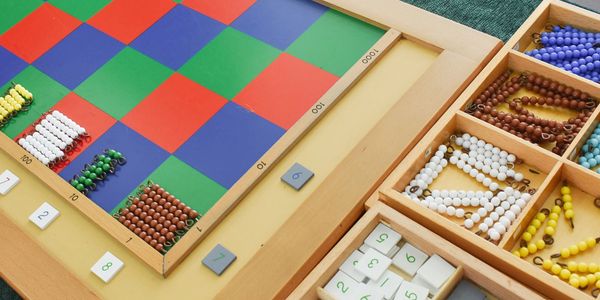The Concrete Foundation of Montessori Education


Emphasizing Tangible Learning - Concrete Montessori Education
In Montessori education, the emphasis on concrete teaching concepts is a defining characteristic. This essay explores the rationale behind this approach, demonstrating why Montessori educators prioritize tangible, hands-on experiences in the learning process.
Understanding the Montessori Emphasis on Concrete Learning
Montessori education, established by Dr. Maria Montessori, is based on the philosophy that children learn best through direct experience and interaction with their environment. This approach is grounded in the belief that concrete learning lays the foundation for abstract thinking, a principle that is especially critical in the early stages of child development.
Reasons for Teaching Concretely in Montessori Education
- Aligning with Developmental Stages: Montessori education is tailored to the developmental needs of children. Children’s cognitive structures in early childhood are oriented towards understanding the world through their senses. Concrete materials satisfy this sensory need and facilitate a deeper understanding of abstract concepts.
- **Building a Solid FoundBuilding a Solid Foundation for Abstract Thinking: Montessori posits that a solid grasp of concrete concepts is essential before moving to abstract thinking. By manipulating tangible objects, children internalize concepts in a way that forms a strong foundation for later abstract reasoning.
- Encouraging Active Learning: Concrete learning in Montessori education is synonymous with active learning. Children engage directly with materials, making learning a dynamic process of exploration and discovery, which is more effective than passive learning methods.
- Catering to Individual Learning Paces: Concrete materials allow children to learn independently. They can repeat activities until they master a concept, providing a personalized learning experience that caters to individual abilities and interests.
- Enhancing Understanding and Retention: Learning through concrete materials enhances understanding and retention. When children can touch, move, and manipulate objects, they engage multiple senses, reinforcing learning and memory.
- Fostering Independence and Confidence: Using concrete materials empowers children to explore and learn independently. This independence in learning fosters self-confidence and a positive attitude towards learning.
- Facilitating Self-Correction and Assessment: Many Montessori materials are designed to be self-correcting. Children can assess their understanding and correct their mistakes independently, which promotes self-assessment skills and a deeper understanding of the material.
Examples of Concrete Learning in Montessori
In a Montessori classroom, you will find a variety of materials designed for concrete learning. For instance, in teaching mathematics, Montessori uses materials like bead chains for counting, golden beads for decimal system work, and geometric solids for understanding shapes. These materials are carefully designed to represent abstract concepts in a tangible form.
Challenges and Adaptations
While the concrete approach is practical, Montessori educators face the challenge of ensuring that the transition from concrete to abstract thinking is smooth and timely. Moreover, adapting materials to cater to diverse learning needs and styles is crucial for inclusivity.
Conclusion: The Tangible Path to Understanding
Montessori’s emphasis on concrete teaching is rooted in a deep understanding of child development and the learning process. By providing children with tangible experiences, Montessori education lays a foundational knowledge essential for developing higher-order thinking skills. This approach facilitates cognitive development and nurtures a lifelong love for learning, demonstrating the profound impact of concrete knowledge in the formative years.
